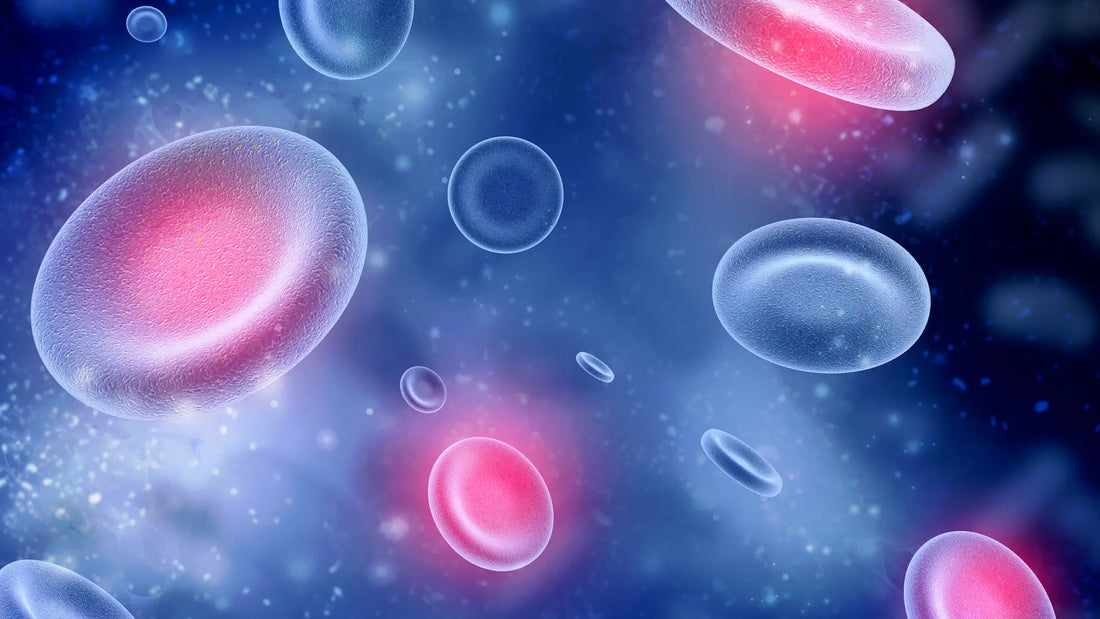Key Points
- Boosted NAD+ in human blood vessel cells
- Reduced cellular aging (senescent cells) by 28.7%
- Decreased key aging markers (p16 and p21)
- Improved cell survival
- Delivered 30% more NAD+ into skin
Methods
Researchers compared standard NAD+ with liposomal NAD+ in two human cell models:
Human aortic endothelial cells (HAECs): line blood vessels
- Treatments:
- Control: Placebo serum
- NAD⁺: 200 μM NAD+
- LF-NAD⁺: 200 μM NAD+ in liposomal formula
Human epidermal keratinocytes (HEKas): outer skin cells
- Treatments:
- Control: Placebo serum
- NAD⁺: 200 μM NAD+
- LF-NAD⁺: 200 μM NAD+ in liposomal formula
They measured NAD+ levels, cell survival, the number of senescent cells, markers of aging (p16, p21), and how well NAD+ penetrated skin tissue.

Improved Skin Penetration of NAD+
Tests on human skin samples showed that liposomal increased skin penetration of NAD+ by 30%, allowing for deeper delivery to the interface between the outer (epidermis) and inner (dermis) skin layers, where tiny blood vessels support skin health.
"Using infrared spectroscopy on human skin explants treated with LF-NAD+ or NAD+ alone, we observed that LF-NAD+ increases the skin penetration of the active substance NAD+ by 30% compared to the application of NAD+ alone"
This enhanced penetration supports the potential of liposomal NAD+ to act directly on the skin's microcirculatory network, amplifying its protective, anti-aging effects in skin tissue.
Liposomal Delivery Increased NAD+ and Cell Survival
In blood vessel cells (HAECs), the liposomal group saw a clear rise in NAD+ levels, while NAD+ alone saw no change.
"A significant increase in intracellular NAD+ content was observed in HAECs after LF-NAD+ treatment, but not with NAD+ 200 μM."

This graph shows the significant increase in blood vessel NAD+ levels from the liposomal formulation (blue) compared to standard NAD+ (gray).
This graph shows the significant increase in blood vessel NAD+ levels from the liposomal formulation (blue) compared to standard NAD+ (gray).
In skin cells (HEKas), the liposomal rapidly shifted the NADH/NAD+ balance toward NADH. This suggests the formula may affect different body tissues in unique ways, a finding that requires more research.
"Conversely, in HEKAs the intracellular NAD+ content was reduced compared to negative control, suggesting that NAD+ is quickly converted to NADH."
Liposomal NAD+ improved blood vessel cell survival by 19.3% but showed little effect in skin cells. Understanding oral NAD+ efficacy helps contextualize these findings, as direct cellular delivery through liposomal formulations may bypass some of the absorption challenges associated with traditional oral supplementation.
"A significant increase in survival was observed in HAECs treated with LF-NAD+, compared to control +19.3% and to NAD+ alone +4.3%."
Reduced Cellular Senescence and Markers Decreased
Even with the differing effects on NAD+ metabolism, liposomal NAD+ consistently lowered the burden of aging cells. Senescence declined by 28.7% in blood vessel cells and 15.4% in skin cells.
"A significant reduction in the number of senescent cells was observed in both HAECs and in HEKas treated with LF-NAD+. Compared to NAD+ alone, the average reduction was 28.7% and 15.4% for HAECs and HEKas, respectively."
Similarly, expression of p16, a protein that stops cells from dividing, reduced in both endothelial (HAECs) and skin (HEKas) cells.
"Accordingly, we hypothesize that the increased delivery of NAD+ by liposomal encapsulation may increase the activity of the mitochondrial sirtuins, and that the reduced p16 expression reflects the reduced amount of intracellular ROS."
In addition, expression p21, another metabolic "brake," was lowered in HEKas, but not in HAECs.
"p21 and p16 are commonly employed as biomarkers of cellular senescence… LF-NAD+ was associated with a reduced expression of p16 in both HAECs and HEKas and with a significant reduction in p21 in HEKas only"

Liposomal (LF-NAD+, blue) reduced senescent cells far more than NAD+ alone (gray).
These shifts align with a drop in aging cells, suggesting that LF-NAD⁺ not only reduces signs of aging but also influences the proteins that help control the aging process inside cells.

Conclusion
This study shows that putting NAD+ into a liposomal carrier improves its delivery and anti-aging effects compared to NAD+ alone. Age-related loss of NAD+ disrupts energy metabolism and protective enzymes such as sirtuins, which accelerates the buildup of inflammatory senescent cells.
By boosting NAD+ inside vascular cells and increasing skin penetration, liposomal NAD+ may offer a stronger approach for supporting skin and vascular health, pointing towards potential use in advanced anti-aging skincare and wellness applications. Previous research on NAD+ nanoparticle delivery has also demonstrated enhanced vascular benefits, suggesting that novel delivery methods represent a promising frontier in NAD+ supplementation strategies.
"LF-NAD+ is superior to NAD+ alone in promoting cell survival of primary human endothelial cells."
"Compared to NAD+ alone, the LF-NAD+ formulation reduced the expression of two molecular effectors of cell senescence, namely p16 and p21."
"Findings suggest a potentially superior anti-aging effect of LF-NAD+ compared to NAD+ alone, with potential implications in the field of cosmetic dermatology."






